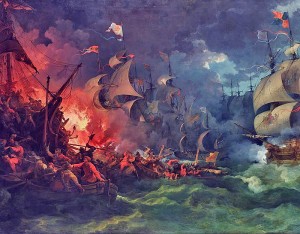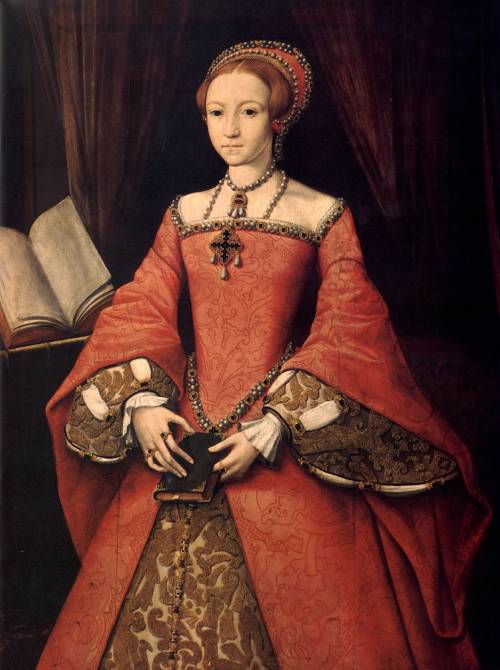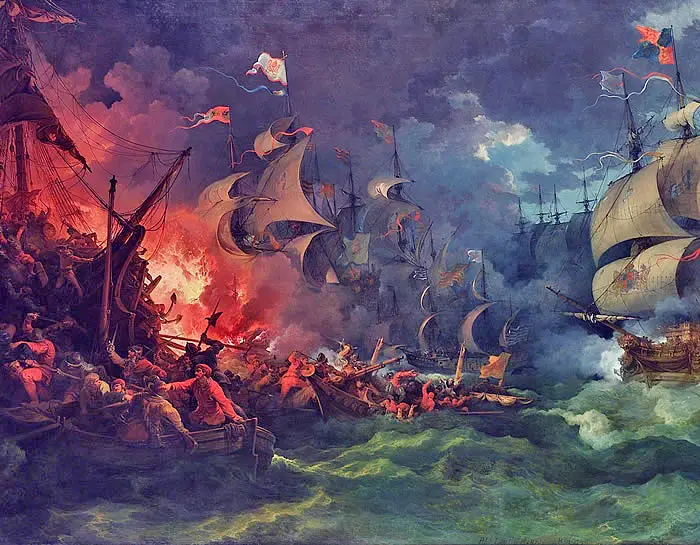
Defeat of the Spanish Armada at Gravelines, Philipp Jakob Loutherbourg the Younger.
The English had learned from previous encounters with the Spanish fleet and so used new and more successful tactics. They had learned from capturing the Rosario in the Channel that the Spaniards could not easily reload their guns, so with their smaller and lighter ships the English were able to provoke the Spaniards into firing, but keep out of range and then close in for the kill.
As the Spaniards tried frantically to reload, the English ships took advantage of the situation by getting close to their enemy and firing repeatedly. The Spanish fleet were also adversely affected by the wind, which kept driving them into shallow water.
By around 4pm, both sides had run out of ammunition, although the English had been loading objects like chains into their cannons so that they could continue inflicting damage on the Spanish Armada. Spain was defeated, losing at least five ships and having several others severely damaged. Spain lost 2,000 men compared to England's 50.
Also on this day in history...
- Marriage of Mary, Queen of Scots, and Henry Stuart, Lord Darnley, at Holyrood Palace (the Palace of Holyroodhouse), Edinburgh.
Notes and Sources
- Ridgway, Claire. On This Day in Tudor History.
- Weir, Alison. Elizabeth the Queen, p. 391.
- Article on the Battle of Gravelines - http://www.historyofwar.org/articles/battles_gravelines2.html
- The Battle of Gravelines



Leave a Reply